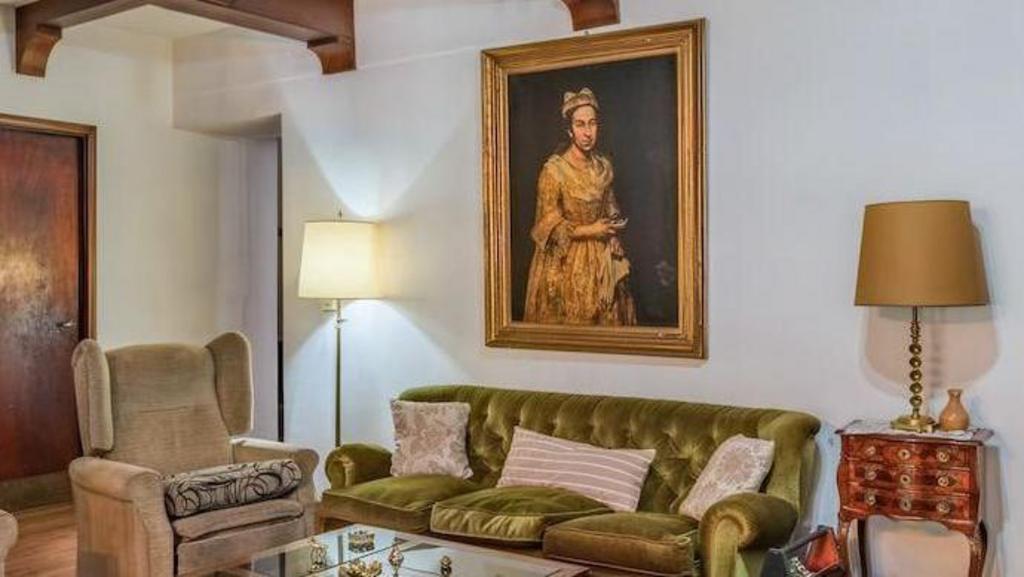A painting believed to have been stolen by the Nazis has disappeared after being identified in an Argentinian estate agent’s advertisement, according to a prosecutor. The artwork was sought following a raid on the property.
The Portrait of a Lady by Giuseppe Ghislandi was observed hanging in a residence near Buenos Aires, featured in an advertisement for the property being sold by the daughter of a high-ranking Nazi official who fled Germany after World War II.
However, a police raid conducted this week at the house yielded no painting. Federal prosecutor Carlos Martínez informed local media that two weapons were seized during the operation.
Mr. Martínez stated that the investigation is being treated as an alleged cover-up of smuggling, as reported by Argentinian daily Clarin.
The newspaper further reported that the furnishings within the property had been rearranged, and the painting was missing from the wall at the time of the raid.
Peter Schouten of the Dutch Algemeen Dagblad newspaper, which initially reported the reappearance of the long-lost artwork, suggested there was evidence “the painting was removed shortly afterwards or after the media reports about it appeared.”
“There’s now a large rug with horses and some nature scenes hanging there, which police say looks like something else used to hang there,” he added.
The Portrait of a Lady was part of the art collection of Amsterdam art dealer Jacques Goudstikker, much of which was forcibly sold by the Nazis following his death.
After the war, some of these works were recovered in Germany and subsequently displayed in Amsterdam as part of the Dutch national collection.
The whereabouts of Giuseppe Ghislandi’s painting of the Contessa Colleoni, an Italian portraitist from the late-baroque period, had remained unknown for over 80 years until this recent sighting.
AD’s investigation uncovered wartime documents indicating that the painting was in the possession of Friedrich Kadgien, an SS officer and senior financial aide to Hermann Göring. Kadgien fled in 1945 and eventually relocated to Argentina, where he became a successful businessman.
Kadgien passed away in 1979. However, a US file reviewed by AD included the statement: “Appears to possess substantial assets, could still be of value to us.”
The paper also noted that it had made multiple unsuccessful attempts to contact his two daughters in Buenos Aires over the years.
Progress in locating the missing works was only made when one of Kadgien’s daughters listed the house for sale.
Another looted artwork, a floral still-life by the 17th-century Dutch painter Abraham Mignon, was also identified on one of the sister’s social media accounts, according to AD.
Following the photo’s emergence, one of the sisters reportedly told the Dutch paper that she did not understand what they wanted from her, nor which painting they “are talking about.”
Lawyers representing Goudstikker’s estate have stated their intent to make every effort to reclaim the painting.
Marei von Saher, the sole-surviving heir and daughter-in-law of Goudstikker, stated that her family “aims to bring back every single artwork robbed from Jacques’ collection, and to restore his legacy.”
According to AD, she took possession of 202 pieces in 2006.
Piranhas is one of nine animal-inspired works which appeared across London last summer.
Terance James Bond’s Suffolk roots were not just a backdrop, but “a source of inspiration”.
It is only the second time Oscar winner Jim Broadbent has shown his work.
A listening device hidden in an artwork in 1945 was undetected by US security for seven years – and it’s not the only example of art having been manipulated for subterfuge.
A posthumous art exhibition opens for former mayoress, Rachel Hall, who died from cancer last year.

